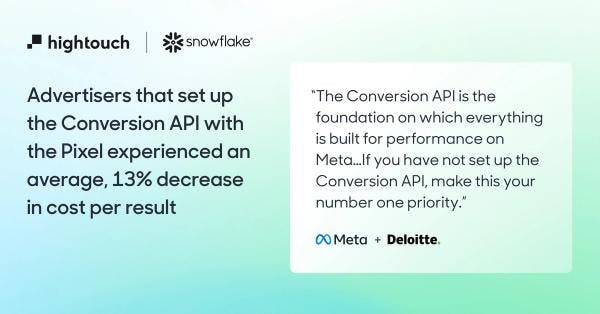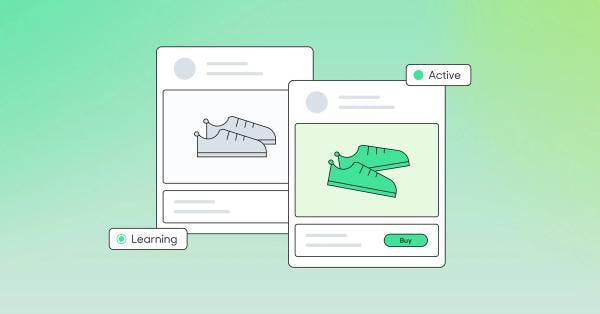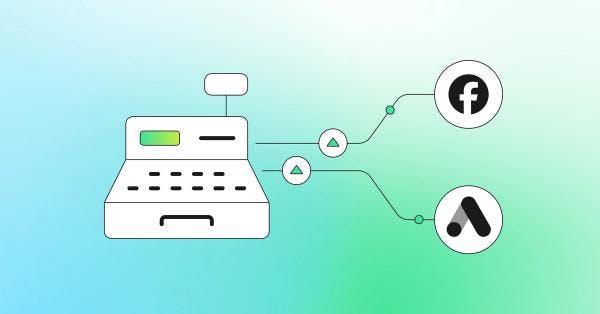Synthetic Conversions
How and why performance marketers use synthetic conversions to drive their business forward.

Alec Haase

Tejas Manohar
November 13, 2023
7 minutes
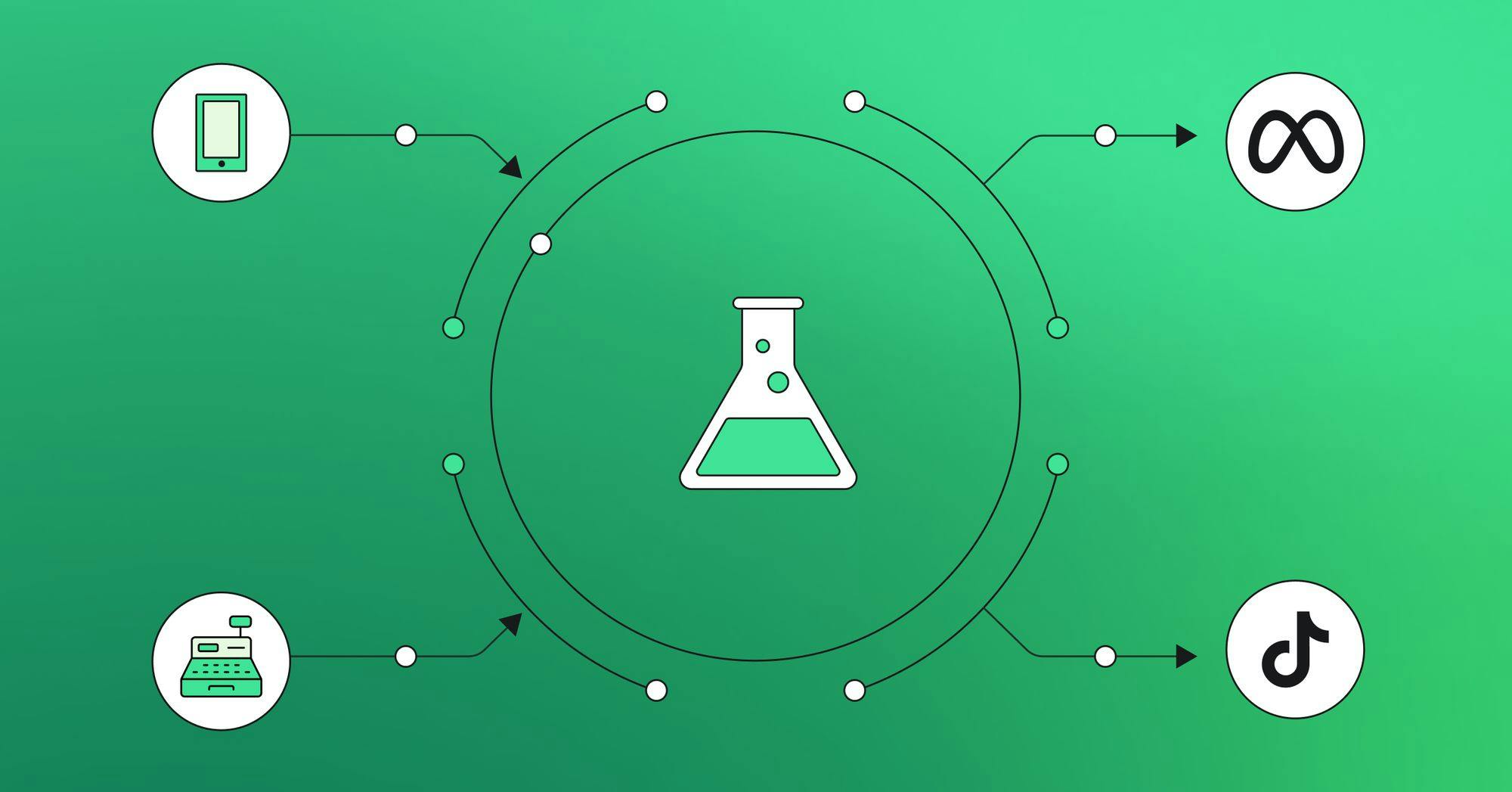
By now, most performance and growth marketers understand why sending conversion events back to paid media platforms like Meta, TikTok, Google Ads, and more is so important (hint: reporting, optimization, and audience building).
But what if your conversion events happen outside these AdTech platforms' attribution windows? Or what if you want to optimize your campaigns to outcomes that aren't actually event-driven, such as when a machine learning model predicts that a customer has reached a certain likelihood to purchase?
That, friends, is precisely where synthetic conversion events come in. This concept of “non-events” is an extremely powerful lever that can be pulled for today’s organizations to drive growth on paid media. This post will explore synthetic conversion events, why they matter, and how modern marketing and data science teams use them to supercharge paid media campaigns.
What are Synthetic Conversion Events?
Synthetic conversions are precisely what they sound like - events that do not actually occur but rather are (synthetically) created. They typically involve the creation of machine learning (ML) based predictions, such as propensity scores, designed to anticipate the likelihood of a specific event occurring. Rather than waiting for an actual event to occur, organizations can send these user-level predictions as conversion events to advertising platforms like Meta, TikTok, and Google Ads to optimize their campaigns.

Synthetic Conversions: A Real-World Use Case
To help you understand synthetic conversions, we’ll walk through how one of our customers utilizes Hightouch to send synthetic conversions to paid media platforms. The customer is a neobank - a digital-first financial company that offers banking services like checking accounts and debit cards but does not have a physical location. Given they have no physical locations, they rely heavily on paid media to drive their customer acquisition efforts.
While the team looks at all their funnel metrics, the business is ultimately only making money on Funded Bank Accounts - aka accounts that users deposit money into. Their acquisition funnel looks like this:
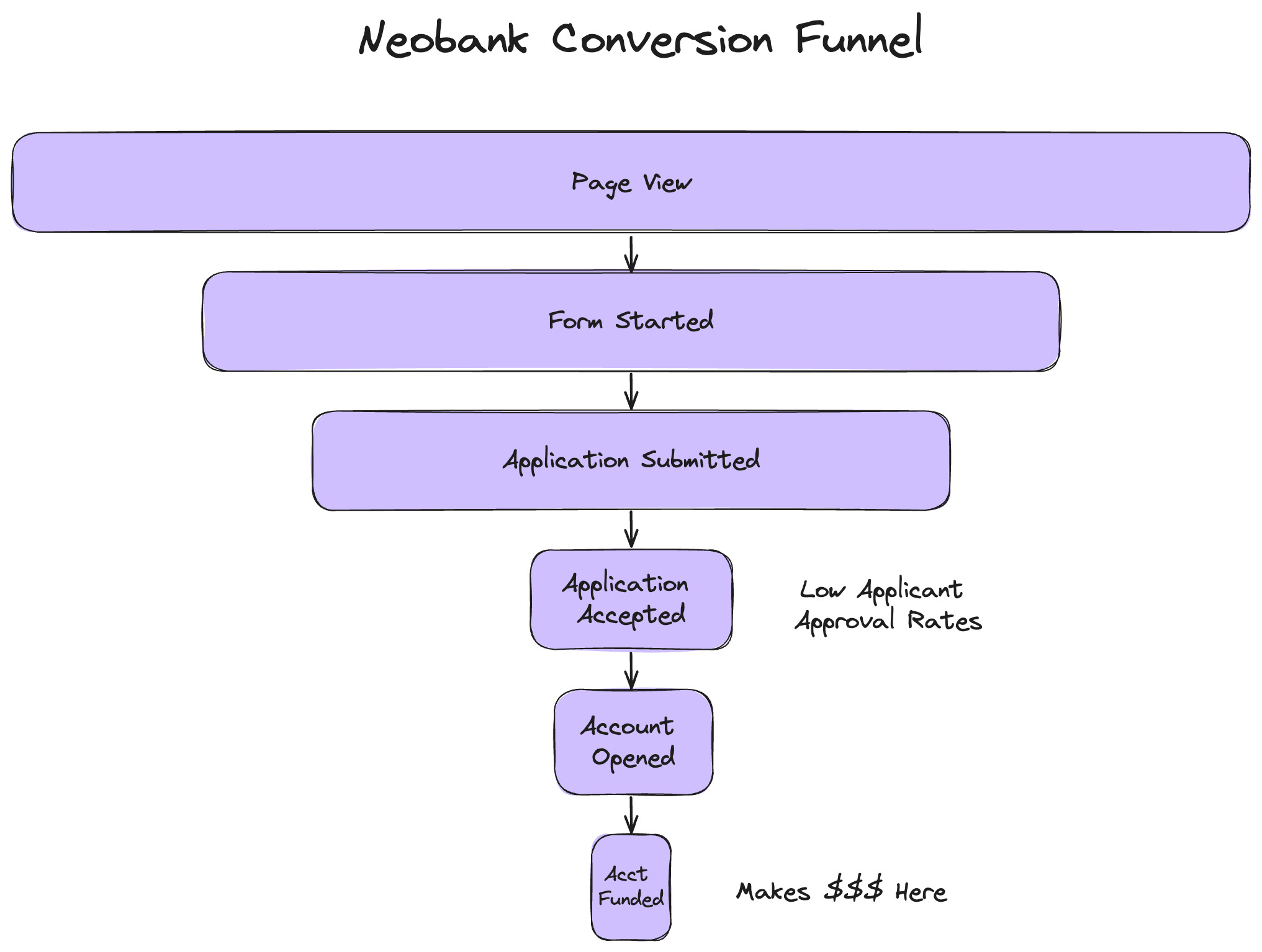
The Problem
The team set up each of the above events to fire back as conversions to their paid media platforms. When they did, they ran into a problem: although the first few steps of the funnel happened very soon after a user visited their website, there was a considerable time gap between an application being accepted and an account being funded - so much so that their Account Funded events (the events they get paid on) were outside of the time windows set by Meta and other paid media platforms…
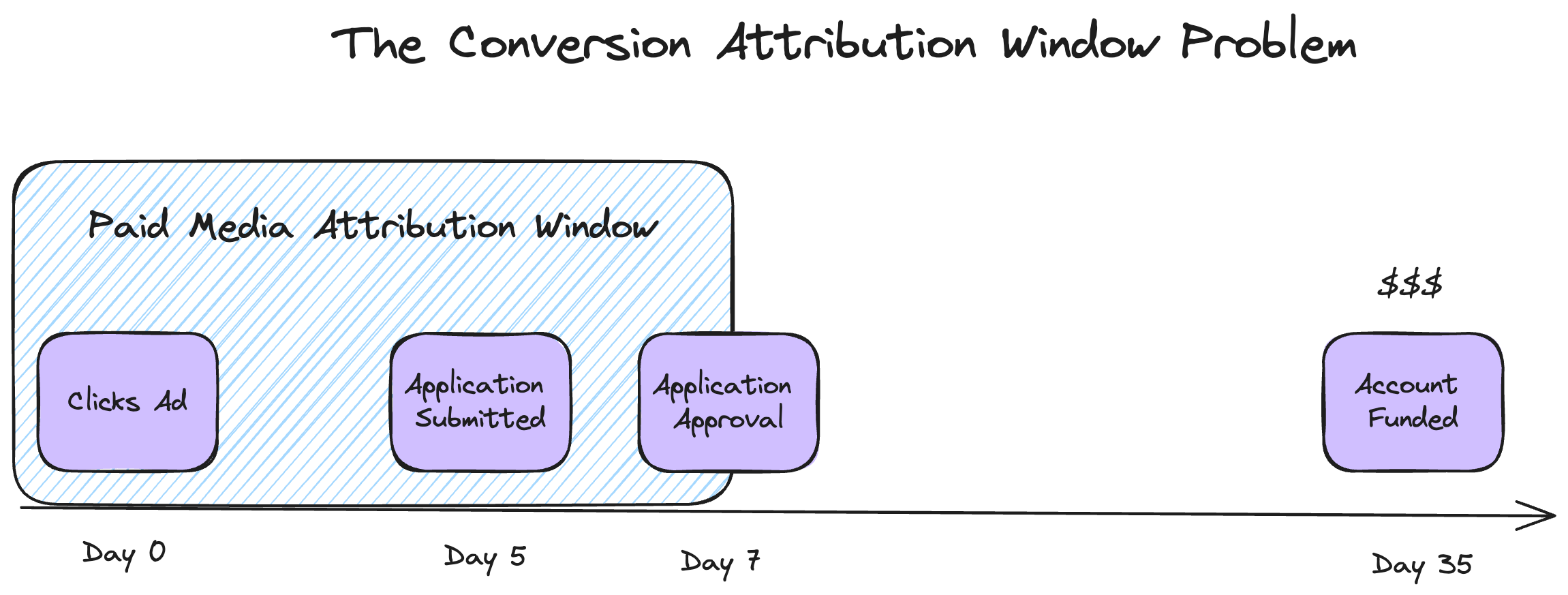
Once the team realized they couldn't set their ad platforms to optimize campaign spend toward Account Funded events, they began working their way up the funnel. Again, they ran into a problem - many of their Application Approval events also fell out of their conversion event window. This left them with a choice: either optimize towards incomplete signals or optimize towards a “complete” event in Application Submitted.
Knowing the importance of optimizing towards complete signals, the team began relying on their Application Submitted events to optimize spend. They began driving more applications than ever - but their ROAS tanked. Why? Most of their applicants had low credit scores and weren't approved. Ad platforms were efficiently optimizing toward application volume; however, this signal did not indicate user quality - or who would approve - let alone fund their account.
The Solution
The marketing team turned to data science and synthetic conversions to solve their conversion event problem. Rather than waiting for customers to fund their accounts, they leveraged machine learning models to predict the propensity of a submitted application to become a funded account. Their data science team stored the outputs of these models in their data warehouse, which was then accessible for the growth marketing team to sync via Hightouch to their many paid media platforms.
To the ad platforms, these new conversions were coming in within the attribution window and appeared to be any typical conversion event. Behind the scenes, however, the events were actually the outputs of data science models being sent in as events.
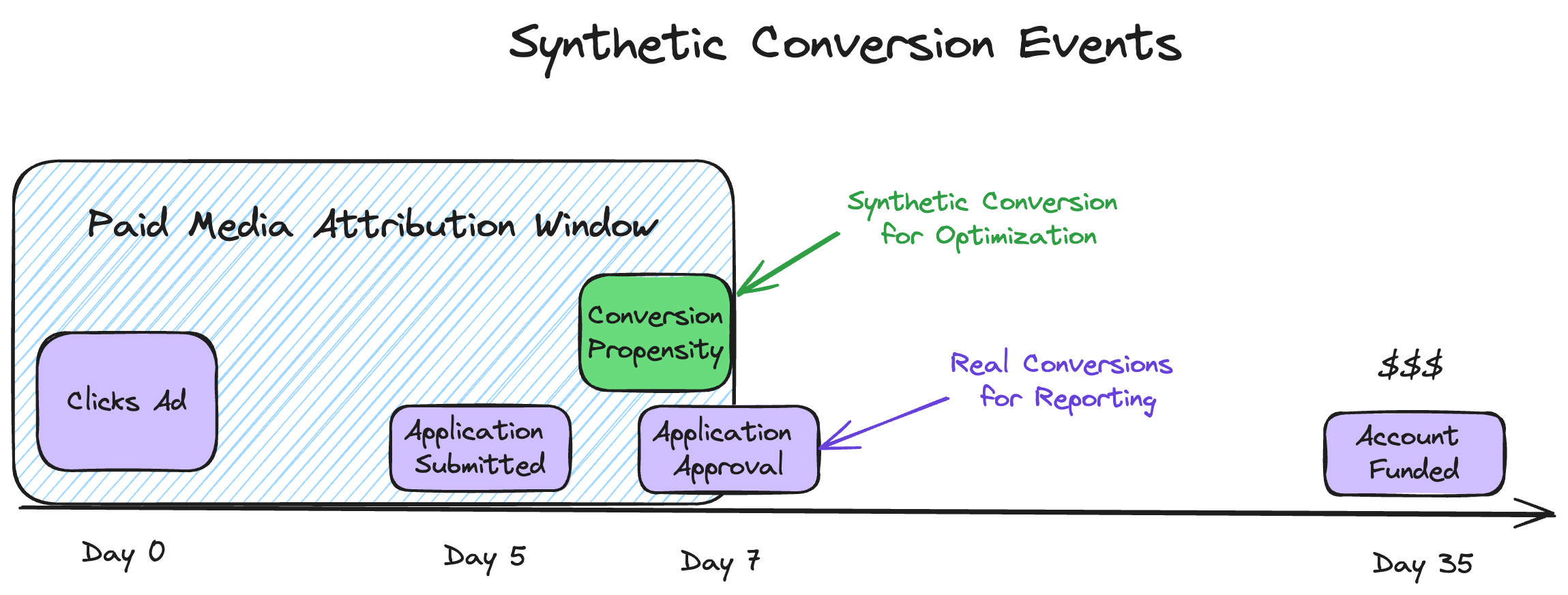
With the new events, the paid media platforms began efficiently optimizing spend towards the users who were most likely to convert - boosting their ROAS higher than ever. As time has passed, the team has even further refined the models and timing to optimize when and how to use the synthetic conversions - now a core piece of their paid media strategy.
Creating your own Synthetic Conversion Events
Now that you hopefully understand how and why teams would use synthetic conversions, let's walk through the two steps you need to take to implement this on your own:
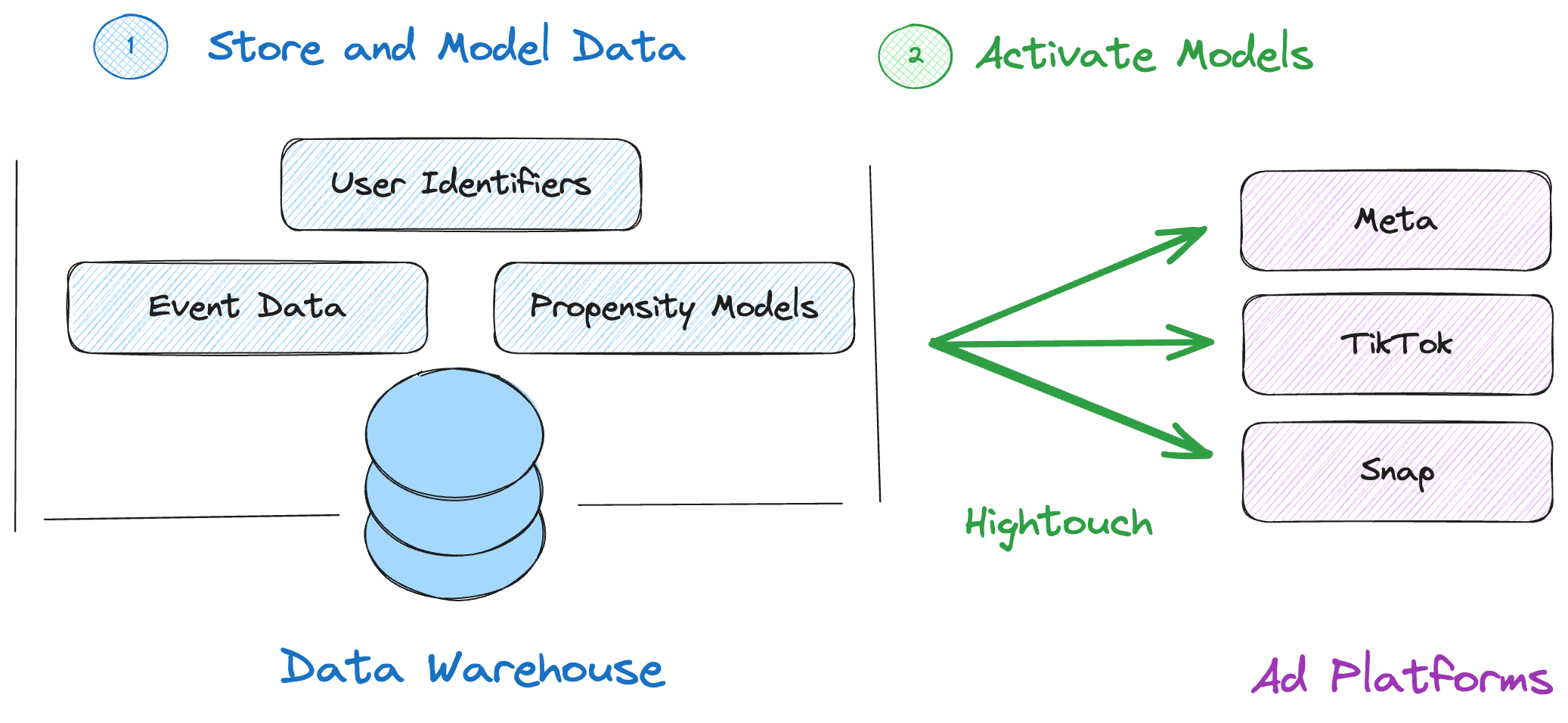
Step 1: Store and Model Data
First, you need to generate the data, such as a machine-learning driven propensity score, that you will ultimately send to an ad platform as a conversion. Propensity scores are numerical values that represent the likelihood of a specific event occurring based on historical data and various predictor variables. For instance, you can create propensity scores to predict which customers are likelier to purchase, subscribe to a newsletter, or click on an ad.
Once you've generated propensity scores, you’ll want to ensure these are centrally stored in your cloud data warehouse alongside your user identifiers and other behavioral events. A data warehouse is a centralized repository for all your data, making it easily accessible for analysis and utilization. Modern data warehouses like Snowflake, Databricks, and Bigquery are designed to handle vast amounts of data and can accommodate the storage of propensity scores alongside other valuable information.
Step 2: Activate with Reverse ETL
With data stored centrally, teams turn to Reverse ETL (Extract, Transform, Load) platforms to activate the data out to the paid media platforms. This process extracts propensity scores and other relevant data from your data warehouse like user identifiers (used to drive up match rates), transforms them into a format suitable for integration with advertising platforms, and finally loads them into these platforms. Reverse ETL tools like Hightouch automate this entire process, making it efficient and way less resource-intensive than trying to create custom pipelines–or worse, dealing with CSV files.
After integrating your warehouse as a source to Hightouch, you can use SQL to define what data to query. An example model within Hightouch could look something like this:

With your model defined, you can pick your desired destination (over 200 supported), map the relevant fields to the expected fields of the destination (ex. Meta):
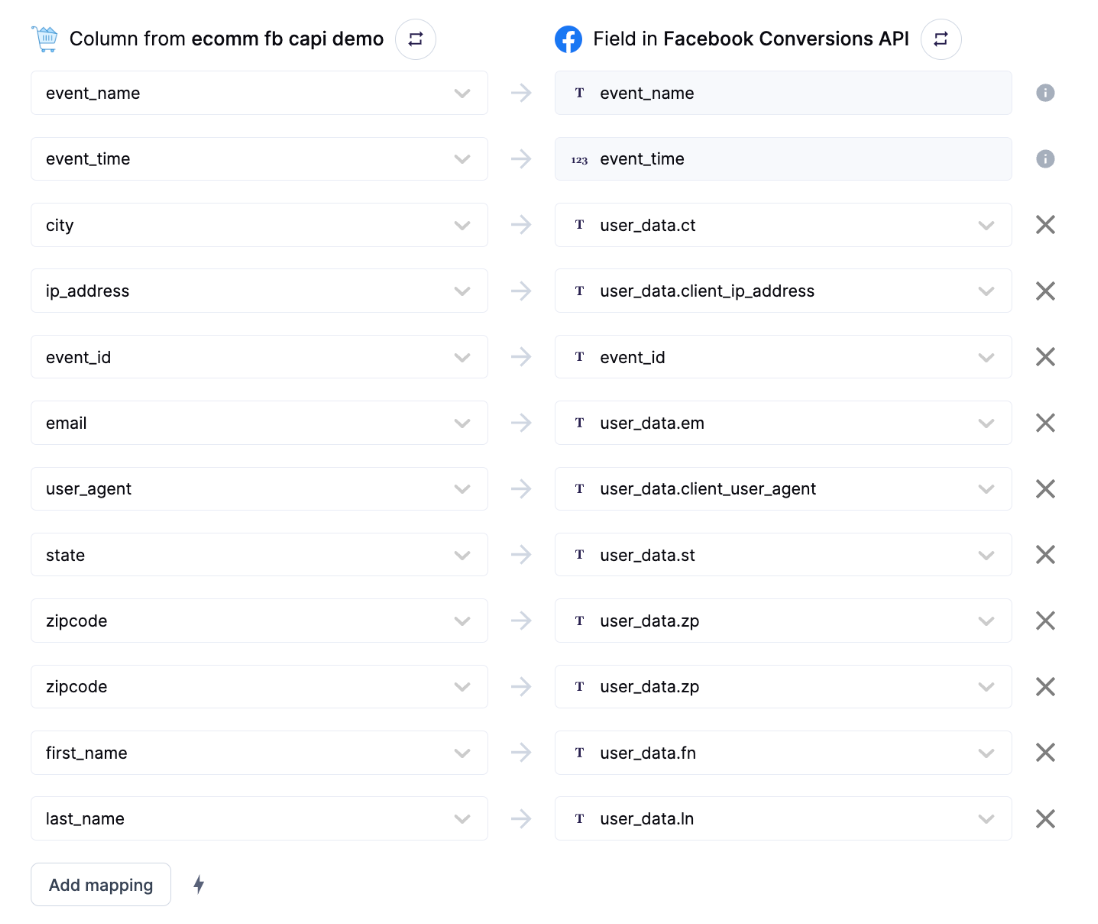
Hightouch then allows you to setup your sync schedule at whatever cadence you want to send the data:

And that's it! The best part is teams can start syncing conversions in minutes --for free-- by creating a Hightouch workspace and integrating it with their existing data warehouse.
Conclusion
Synthetic conversion events are a powerful tool that can help performance marketers optimize their paid media campaigns even when traditional conversion events are not available.
Thanks to Reverse ETL platforms like Hightouch, you can quickly spin up the pipelines to activate synthetic conversion events and supercharge your paid media campaigns.
Want to learn more about Conversion APIs? Check out this webinar, this step-by-step playbook or just reach out to our team for a chat!
